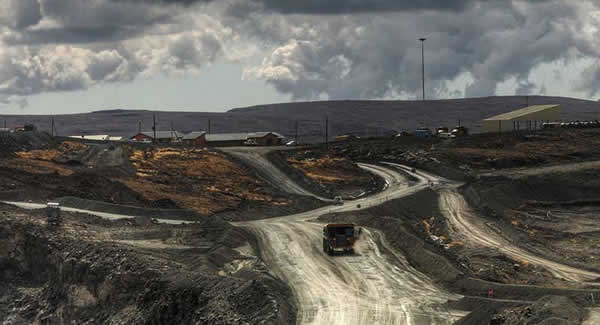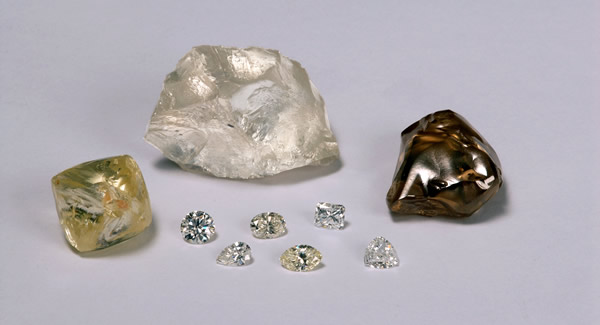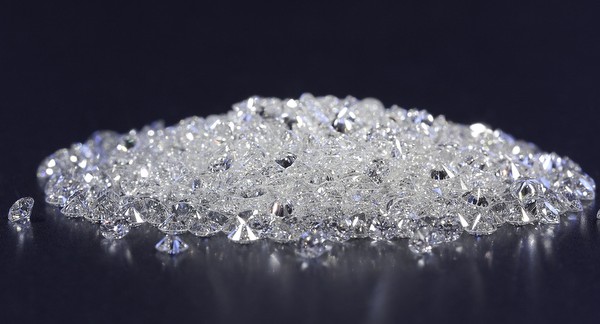Outwardly, the annual 2013 diamond pipeline looks similar to that for 2012: the rough supplies into the value chain totaled $15.56 billion (2012: $15.5 billion), which, after cutting and polishing, yielded $21.6 billion worth of polished (2012: $20.7 billion) at polished wholesale prices (PWP). Global diamond jewelry retail sales grew by 3-4 percent from $72.1 billion to $74.48 billion, just skirting the $75 billion level. The pipeline’s real story, however, plays itself out internally within the value chain: the industry’s performance in 2013 significantly improved over 2012. On the consumption side, there were some winners and losers. China saw significant growth – we estimate 12 percent on the retail side – but the nature of the demand in China is changing: the Chinese market became much more similar to the US market, i.e., there were greater preferences for mass-marketed, lower-quality diamonds. In the US and Japan, there was some growth. In India, however, demand for polished in the domestic jewelry market declined by some 5 percent.
Global diamond jewelry retail sales grew by 3-4 percent from $72.1 billion to $74.48 billion, just skirting the $75 billion level. The pipeline’s real story, however, plays itself out internally within the value chain: the industry’s performance in 2013 significantly improved over 2012. On the consumption side, there were some winners and losers. China saw significant growth – we estimate 12 percent on the retail side – but the nature of the demand in China is changing: the Chinese market became much more similar to the US market, i.e., there were greater preferences for mass-marketed, lower-quality diamonds. In the US and Japan, there was some growth. In India, however, demand for polished in the domestic jewelry market declined by some 5 percent.
[two_third]The major challenges faced by the industry in 2013 were caused by internal rather than external pressures. For instance, the industry faced reduced financing facilities and the withdrawal of some banks altogether, which accelerated shifts of business to Indian entrepreneurs (i.e., five new DTC Sightholders). The industry also experienced growing synthetic challenges, with more synthetics set in jewelry and less in undisclosed loose trading, grading and certification issues and compliance and integrity matters. All of these issues came on top of a continued misalignment between rough and polished prices in various categories.[/two_third][one_third_last]
“All of these issues came on top of a continued misalignment between rough and polished prices in various categories.”
[/one_third_last]
Our rough production figure is about $1 billion higher than the official Kimberley Process (KP) data. This is partly because the output from suspended KP producers Ivory Coast, Venezuela and CAR is traded through parallel channels. Continued sanctions on Zimbabwean diamonds – combined with what appears at times to be near-paranoiac downstream expectations on polished-source identification – did not contribute to greater pipeline transparency. Producer integrity issues in some countries (Angola, DRC and others) also led to underreporting of the true production values. So, although we recognize that official data may put annual production at $14.01 billion (for 122 million carats), we conservatively estimate the 2013 mining output to total $15.14 billion (for 135 million carats). The official average of $114.82 per carat figure seems to be in the right ballpark.

Reduced diamond inventories
The rough and polished inventories within the pipeline saw a reduction from $14.5 billion to $13.7 billion, a reduction of some $800-$900 million. The early months of 2014 indicate that these drawdowns from inventory are continuing at a similar level this year. This is also manifest in slightly lower banking debts: from $16 billion in 2012, down to $15.4 billion in 2013, and we expect it to decline further to some $14.7 billion at the end of this year. These reduced levels of indebtedness were still higher than banks had targeted – during 2013, players felt a liquidity crunch that is expected to exacerbate in 2014.
There is a matter of chicken and eggs – what comes first. A shortfall of liquidity (lack of credit) generally leads to decreased rough purchases and lower inventory levels. It also triggers softening of rough prices. Irrespective of retail demand, experience shows that ample availability of (cheap) credit has a dramatic growth impact on the pipeline.
[two_third]
At the end of the day, it is the bottom line that counts. Our economic models (Tacy Ltd. and Pharos Beam Consulting LLP) definitely show that the diamond manufacturing and trading sector, from rough purchases to polished sales, which accumulatively lost some $400 million in 2012, was able to reverse the trend and returned to some profitability of a similar amount of $400 million in 2013. It’s a minimal margin, but better than the performance in the two preceding years in which the industry actually lost money.
Although rough prices weakened in the latter part of 2013, polished prices pretty much moved sideways and remained more or less constant. In 2013, the bookkeeping challenge was mostly currency fluctuations (rubles, rupees, rands) rather than price volatility.
[/two_third][one_third_last]
“The diamond manufacturing and trading sector was able to reverse the trend and returned to some profitability of a similar amount in 2013. It’s a minimal margin.”
[/one_third_last]
Production: stable volume and slightly declining prices
The Tacy Ltd. annual pipeline provides values, and refrains from analyzing volumes. On the supply side, we estimate global production to remain quite stable at some 135 million carats. The largest supplier, by volume, was, of course, Alrosa. It sold some 5 million carats more in 2013, from 33.2 million in 2012 to 38 million carats. What is fascinating, however, is that the growth came mostly from gem-quality rough sales, albeit at lower per-carat (p/c) prices. In 2013, Alrosa sold 26.7 million carats of gem-quality rough at an average selling price of $126.10 p/c (2012: $134.30 p/c), and some 11.3 million carats of industrial rough at $9 p/c (2012: $10.1 p/c.). Of interest is that the 9 percent average price decline was only 4 percent attributable to a softer market, while the other 5 percent was due to sales mix movements.

One of the challenges facing us when analyzing supply and demand dynamics is the inventory levels of the Russians and their withdrawal policies. Alrosa management recently disclosed that by the end of 2013 it had some 17.7 million carats in stock (30 percent in industrial qualities) and that it aims at reducing these stocks by 2 million carats annually in the next two to three years. In 2013, the sales from inventory were larger than the target. This is separate from stocks held by Gokhran.
[two_third]
As most producers have projected higher production and sales targets, global diamond production is expected to grow to 140 million carats this year. Any increase in demand will most likely be offset by the increased production, so no significant price appreciation is expected in either rough or polished.
Thus, this year’s picture will look rather similar to last year. Unstable exchange rates impact producers’ performance, and De Beers and others will make all efforts to optimize (increase) prices. Traditionally, it was the lower-price supplier to the market, making DTC Sightholder status so exclusive and desirable. The company seems currently bent on reducing the differential margins that will impact client loyalty to the producer. It is not without reason that the DTC is now stressing that an individual client’s “past performance” (i.e., purchase history) is becoming a key factor in their eligibility consideration of future allocations.
[/two_third][one_third_last]
“As most producers have projected higher production and sales targets, global diamond production is expected to grow to 140 million carats this year.”
[/one_third_last]
When following the market more closely in price setting, the question is whether the producers will show the flexibility to lower the prices again when warranted – and, in this respect, in 2013, producer prices seemed pretty much aligned to prevailing rough market conditions. That counts for all the major players.
Missing:equity and liquidity
The figures see little opportunity for pipeline players to increase their equity levels, as the lack of pipeline profitability remains problematic. (Cynics consider the write-offs, or ‘haircuts’ that banks were forced to take as a kind of equity influx in the business; that’s nonsense, the money was already missing from the business before the defaults took place.) There are at least a dozen projects in the pipeline aimed at finding alternative liquidity sources, such as attracting outside investors into the diamond market, or by creating alternative trading platforms where diamond futures can be traded – just as with many other commodities.
Our pipeline research has not shown any significant impact from the investment market yet on the overall supply and demand dynamics, but we shall continue to monitor this new source of demand and funds. In the cutting centers, 2013 saw a stepped-up presence of overseas (Swiss) bankers also acquiring polished on behalf of clients. This isn’t just a diversification strategy; the ability to discretely store these investments is certainly part of the consideration.
Recycling further institutionalized
[two_third]Diamond recycling (buying back from consumers) was very much institutionalized during 2013 and has become an integral permanent part of the supplies – albeit figures declined by some 20 percent over 2012. It remains a most profitable niche. We conservatively estimate the recycled diamonds (at polished selling prices) that came back into the pipeline at some $960 million in 2013. One of the largest players in the recycling markets, White Pines, intimates that recycling availability was impacted by US mass melting of gold and this, in particular, slowed the supply of carat volumes of Indian goods across the American market. In these categories, supplies are down by some 25 percent from a very high peak.[/two_third][one_third_last]
“Diamond recycling (buying back from consumers) was very much institutionalized during 2013 and has become an integral permanent part of the supplies”
[/one_third_last]
But in the larger goods, up to 3 carats, volumes are up remarkably and are growing at rapid speed. This specific company, with some 15 full-time buyers scouting for second-hand diamond jewelry, grew some 50 percent last year and may repeat that performance in 2014 as well. But as the bulk of recycled goods is in the smalls, and not all players are equally efficient or experienced in this market, we accept the estimates of an overall decline of 20 percent.

We have estimated in the past that there is possibly well over $1 trillion worth of diamond jewelry at retail value in the US. A London expert doing a back-of-the-envelope calculation remarked that “even if diamond jewelry is recycled only once every 30 years, and it is probably more than that, there still remains a potential of $8 billion of recycled diamond value per annum in the US alone.” Recycled diamonds will remain one of the fastest growing sectors in the diamond pipeline – and our 2013 estimate of slightly less than $1 billion (at wholesale) might turn out to have still been on the conservative side.
Regulating synthetic sales
[two_third]One can love it or hate it, but one cannot deny that synthetic diamonds dominated the industry debate in 2013. Our initial reporting in early 2012 of huge undisclosed synthetic sales of quality diamonds in New York, and subsequently in Antwerp and elsewhere, set off an avalanche of industry debate. The pipeline has become very much aware of the need to check for synthetic diamonds – and detection machines have become the most sought-after equipment in the diamond centers. It is our opinion that we are still on the eve of the beginning of mass-production capacity of gem-quality synthetics.[/two_third][one_third_last]
“It is our opinion that we are still on the eve of the beginning of mass-production capacity of gem-quality synthetics.”
[/one_third_last]
The issue is extremely flammable. There is an interesting theory around the synthetic publicity that I would like to raise for you to ponder. A recent academic research paper on the impact of synthetics on Botswana finds that “it has been argued that it is in the interest of Botswana to move to mandatory global standards along the diamond value chain, which differentiate mined from synthetic diamonds. However, the international community is unlikely to support such a standard unless it can be demonstrated that fraud is occurring.” Some synthetic producers support that theory.
As synthetics are not a health hazard, there are no safety elements involved; they are neither food nor medicine that require governmental standards or control. It is argued that in order for the industry to adopt voluntary self-imposed ethical disclosure rules, also to be adopted in governmental regulations, there must be a serious threat to the public – it must be shown that the public might be defrauded without such mandatory rules. Professor Roman Grynberg, one of the authors of the study by the Botswana Institute for Development Policy Analysis, has considerable evidence in support of that position.
This gives us much food for thought. The unpleasant, unsavory, publicity about the undisclosed synthetic ‘epidemic’ in 2013 may indeed become, if it hasn’t already become, the impetus for government regulators to get into the act. Whether that’s a negative or a positive depends on where one stands on the issue.
The challenges from within
The pipeline chart speaks for itself. Last year, the diamond industry faced enormous challenges and, generally, went through a difficult period – even though there were no serious problems on the demand side. The difficulties were within the pipeline itself.

Although we don’t want to suggest causality, it seems sometimes that in adverse times the pipeline integrity also comes under pressure. Unscrupulous players resort to unethical practices, ranging from undisclosed selling and mixing of synthetics, to misstating the correct characteristics on certificates (i.e., upgrading), to defaults on payments, etc. Fortunately, one can the count the unscrupulous players since they are not very many – they are known, they are visible, though more often than not they are also ‘untouchables.’
[two_third]From an industry perspective, when a ‘good company’ needs to compete with a ‘bad company,’ the latter tends to win most of the time. They trigger competitive distortions – and one finds oneself trying to compete on an uneven playing field. It affects the entire pipeline. We all lose.
Thank goodness, though, that the overall majority of the industry players are worthy of, what De Beers calls “living up to diamonds.” Ours is a sparkling business with a great future. However, once a year, when one reviews the previous year’s performance, it is worthwhile reflecting that we cannot take our destiny for granted. Our main problems are mostly internal – and that’s a great advantage, if not an outright privilege. It means that we have a chance to effectively deal with all these challenges from within. We shouldn’t miss the opportunity.[/two_third][one_third_last]
“Thank goodness, though, that the overall majority of the industry players are worthy of, what De Beers calls “living up to diamonds.” Ours is a sparkling business with a great future.”
[/one_third_last]
